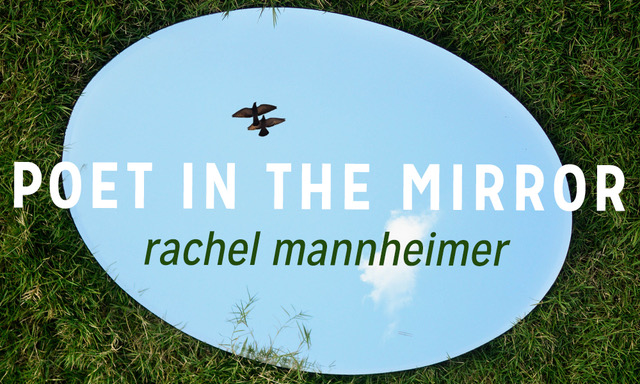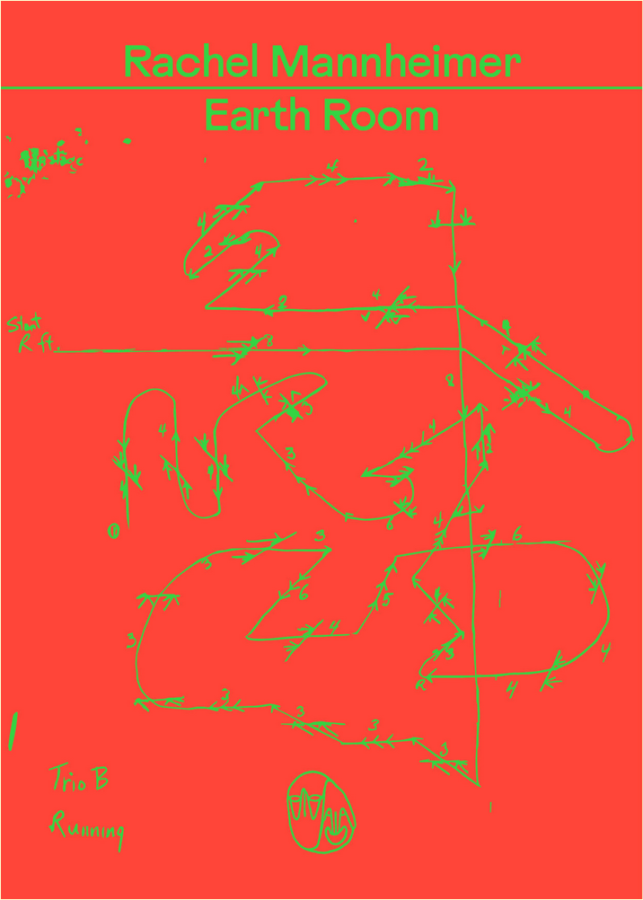Poet in the Mirror: Rachel Mannheimer

We’re so proud to share some insight into the lives and hearts of today’s poets with our Poet In The Mirror series. This month, Rachel Mannheimer— author of Earth Room (available now from Changes Press)— shares insight into writing about art, how narratives take shape, and organizing a first collection.
On the Long Poem
Let’s talk about the long poem! Earth Room is a book-length narrative poem. I love how we as readers go on this long journey with a speaker, communicated to us through dispatches of time and space. How, and when in your process, did you know you were writing one poem, as opposed to many?
Not till the very end! Although I was definitely thinking of the book as a book. I felt, at the start of it, that I’d found a voice or a way of writing that worked for me, that felt flexible and capacious and allowed me to write about things I hadn’t been able to write about before. And because I was thinking of it as a book, I didn’t feel the same pressure on each individual poem; the poems could be looser, with threads left dangling.
I like your idea of it as one long journey, and when I was arranging the full manuscript, I was definitely mindful of how it moved between different locations, of how various figures were introduced, how their stories carried through. But it was only when I was preparing to submit the completed thing that my partner, Chris, read it over and was like, “Isn’t this all one poem?” And he was right.
On Inspiration and Art
Earth Room is in deep conversation with many other artists: visual artists, musicians, performance artists, just to name a few. How did you decide which art to write toward? Was it natural inspiration, or conscious effort to be in discussion with art you love?
I’d say Robert Smithson was the entry point for this book. One of my first published poems was a Smithson poem; it’s one of the three or so older poems that made it into the manuscript (though I did rework it). Some of the other artists in the book are naturally connected to Smithson—his contemporaries, his broader circle. Others are less directly connected, but I hope the poems makes some argument for their connectedness.
I’ve always been attracted to conceptual art. Having grown up in Alaska, far from the centers of the art world, I appreciate the ways in which conceptual art is accessible through language. You can imagine it and have some engagement with it—even recreate it—just by hearing it described, or reading a set of instructions. A loft filled with dirt. Smithson’s Partially Buried Woodshed.
Land art is conceptual but it’s also very physical. And I’m equally drawn to art that engages the body. That includes, in the book, a lot of dance and performance, but also a sculpture that you circle in a gallery, or something like Spiral Jetty, an earthwork you can walk on—and that you have to travel to. Smithson was interested in time and entropy, the eventual disappearance of many of his works, and Spiral Jetty is different on every visit, different for every body. So to write about this kind of art is to write about specific experience—the weather, the light, who you’re with. And the body’s own time: history, memory, narrative.
On Shaping the Collection
I’m struck by one moment, dispatched from Tempelhof in this book: “A relationship is only that— / the space between two shapes. A shape.”
What shape were you trying to create with Earth Room?
Well… the space between two shapes, I guess! A lot of the book developed out of the question of how to be in partnership—how to move and think and grow alongside another person. How to work together while also maintaining a sense of self, letting that space between you expand and contract.
I started the book at the start of a domestic partnership. My goal was to write poems that acknowledged that other person in the room.
On Craft
I love how form shifts throughout this book, between lineated lines and prose blocks. The craft and form throughout this journey feel deliberate and illuminating.
What is one piece of craft advice that motivated you throughout the writing of this book? Alternatively, what is a piece of craft advice that you don’t practice yourself?
I once saw Sheila Heti give a craft talk, and it basically consisted of showing the audience how she organized information on her computer, the different programs she used, etc. So, in that spirit: this book was mostly crafted in a Google Doc, where I jotted things down as I went about my life, and where I later compiled notes from my reading and research. Eventually, I printed that document out and went through circling things I liked.
Some of the poems were already there, mostly whole. Some poems came from assembling smaller pieces; those ones were often lineated, lighter on the page. Others came from whittling down big blocks of prose, more dense with narrative or research. Maybe it’s a little bit sculptural—adding pieces until the thing can stand, or carving away until you see the shape.
 Rachel Mannheimer was born and raised in Anchorage, Alaska, and lives in New Haven, Connecticut, where she works as a literary scout and as a senior editor for The Yale Review. Earth Room is her first book.
Rachel Mannheimer was born and raised in Anchorage, Alaska, and lives in New Haven, Connecticut, where she works as a literary scout and as a senior editor for The Yale Review. Earth Room is her first book.
Saba Keramati
Saba Keramati is a Chinese-Iranian writer from the San Francisco Bay Area. A graduate of University of Michigan and UC Davis, her work has been nominated for a Pushcart Prize, and appears or is forthcoming in Michigan Quarterly Review, Glass: A Journal of Poetry, Vagabond City Lit, and other publications. You can follow her on Twitter @sabzi_k.